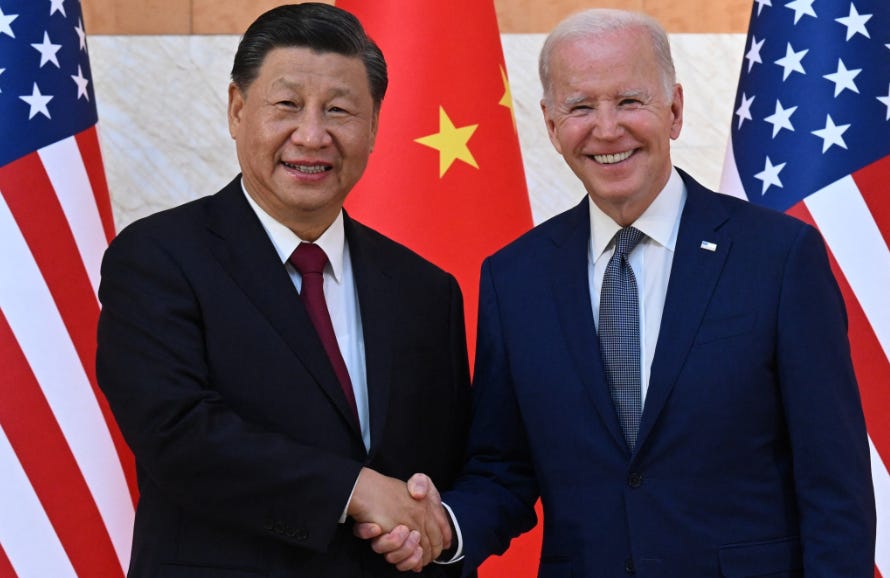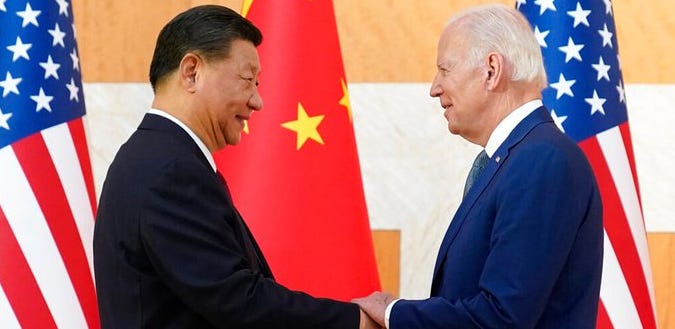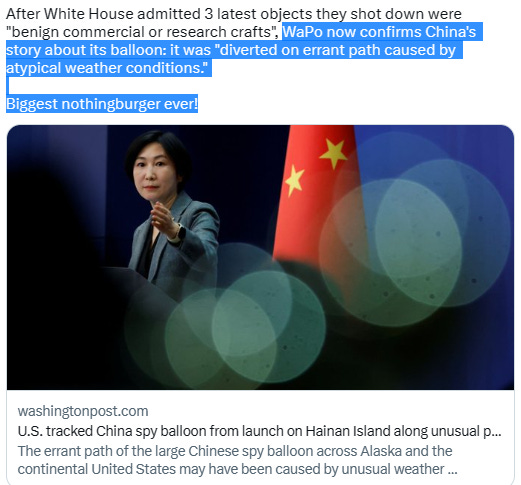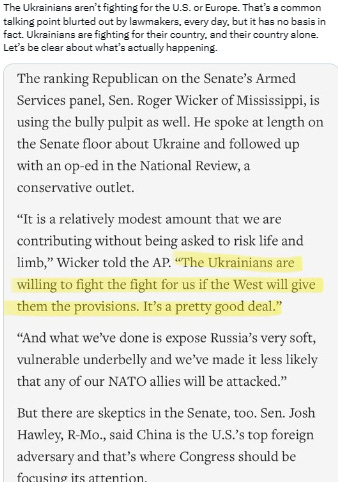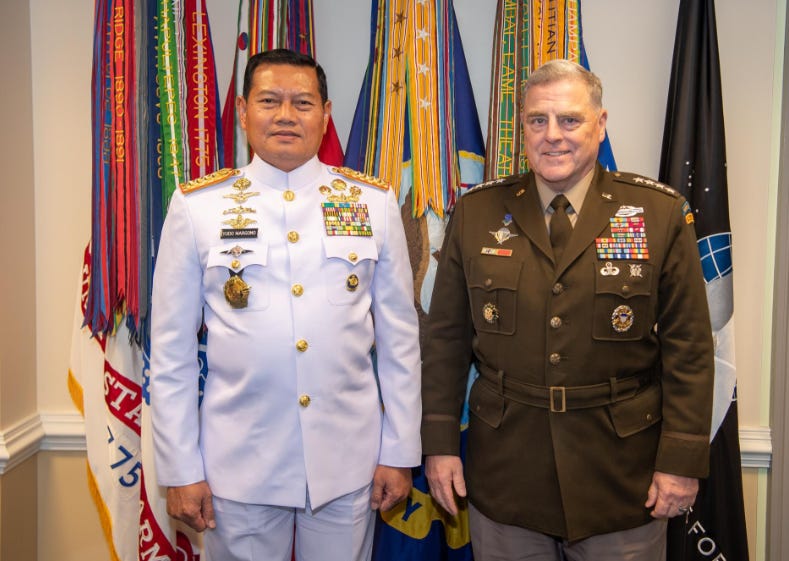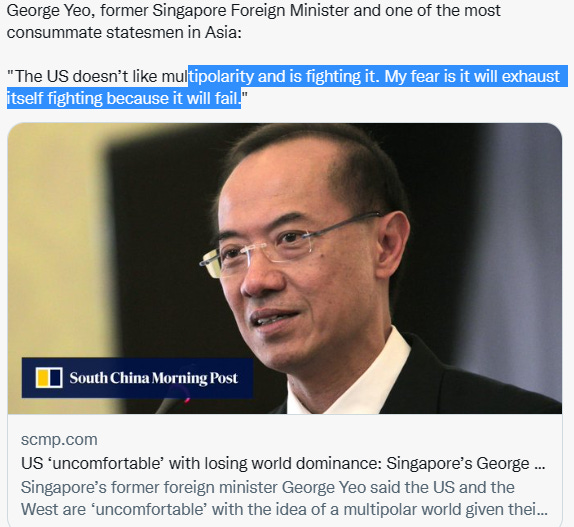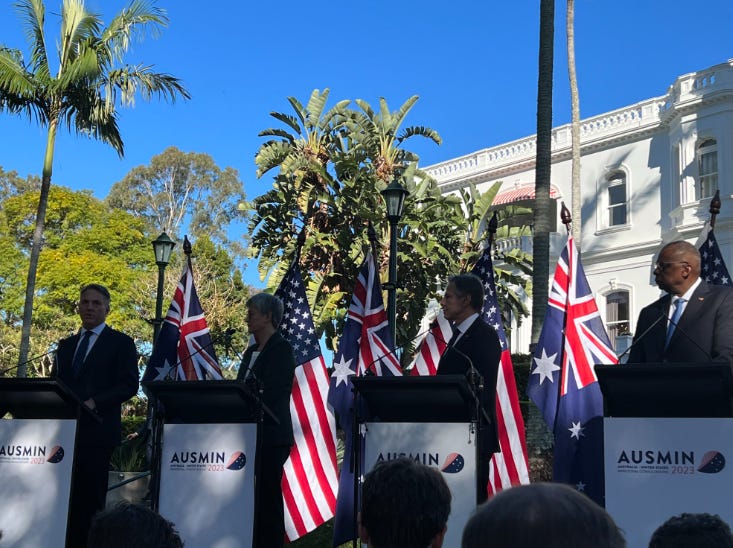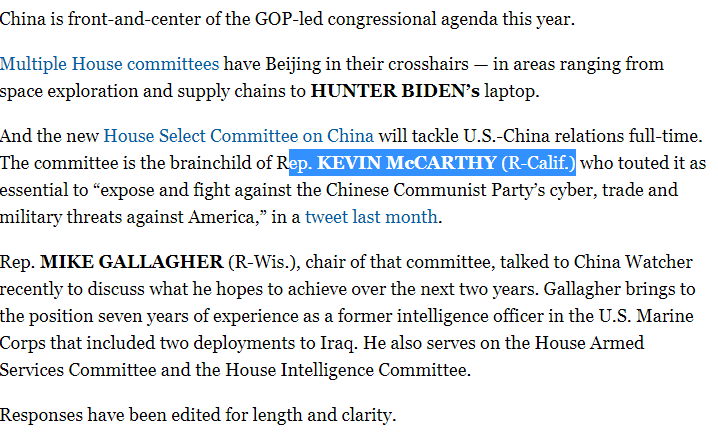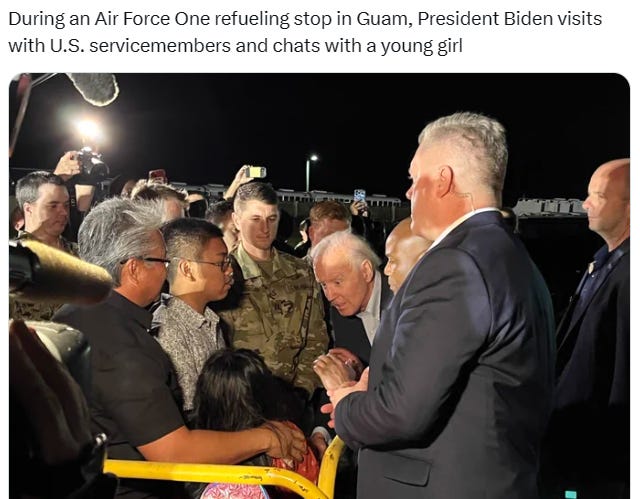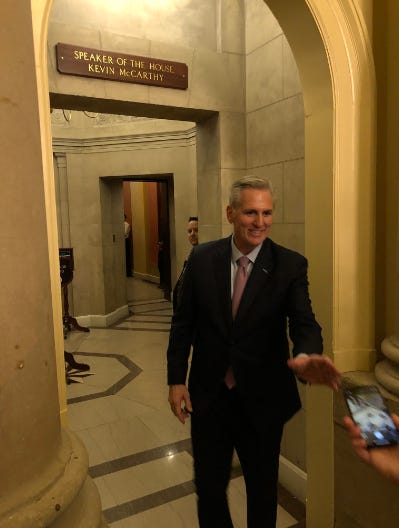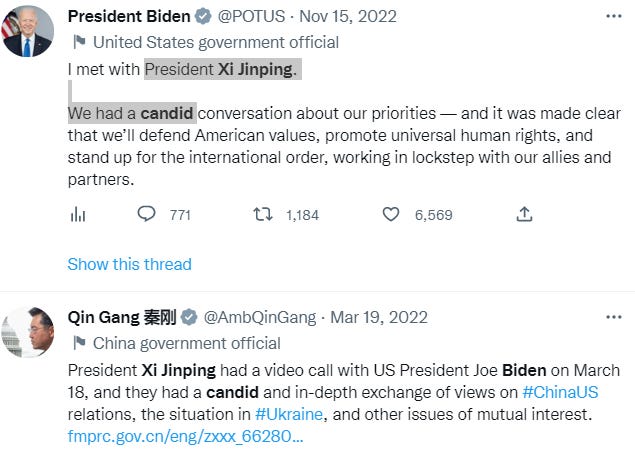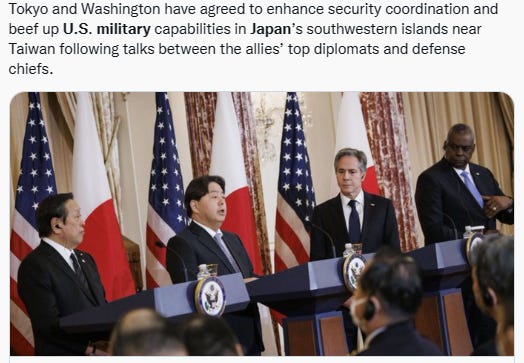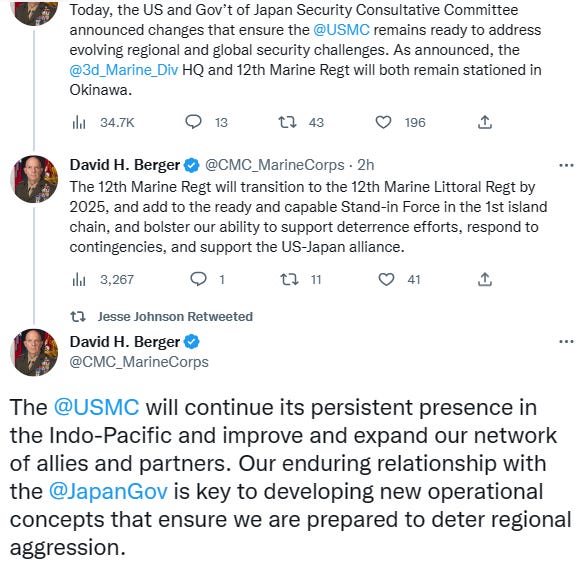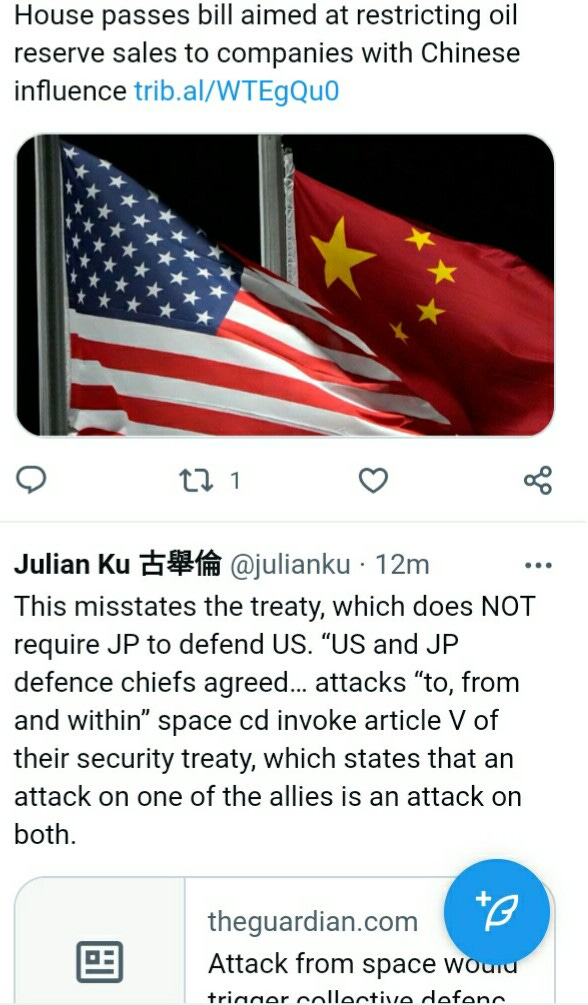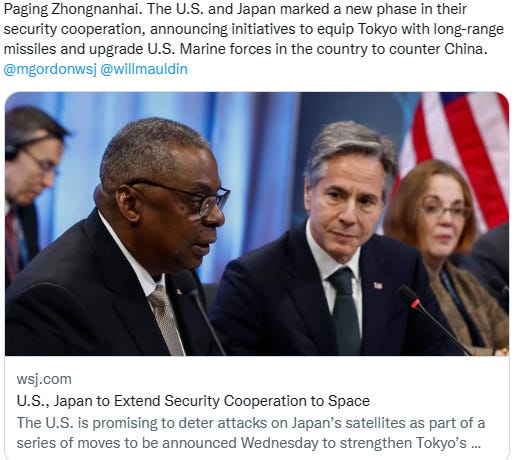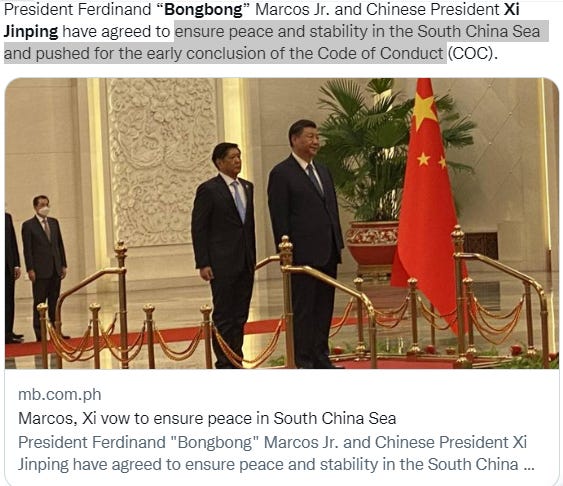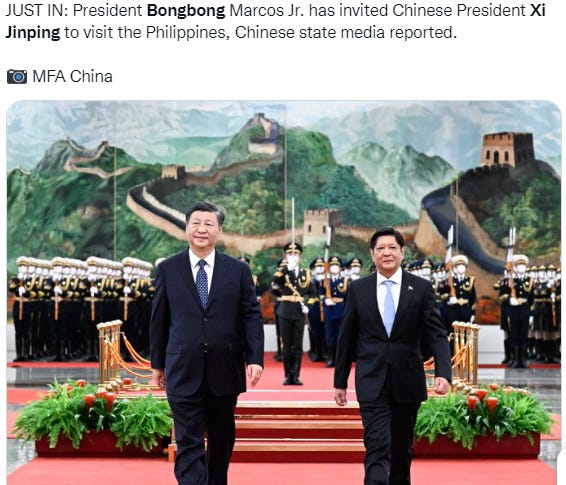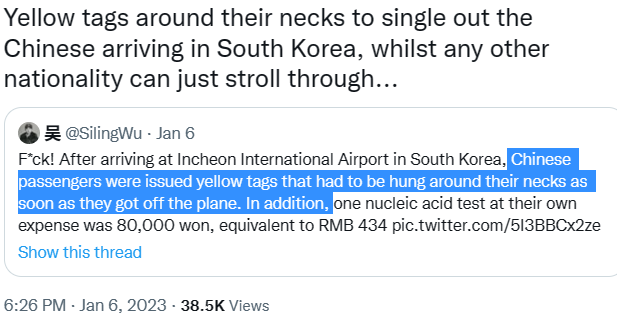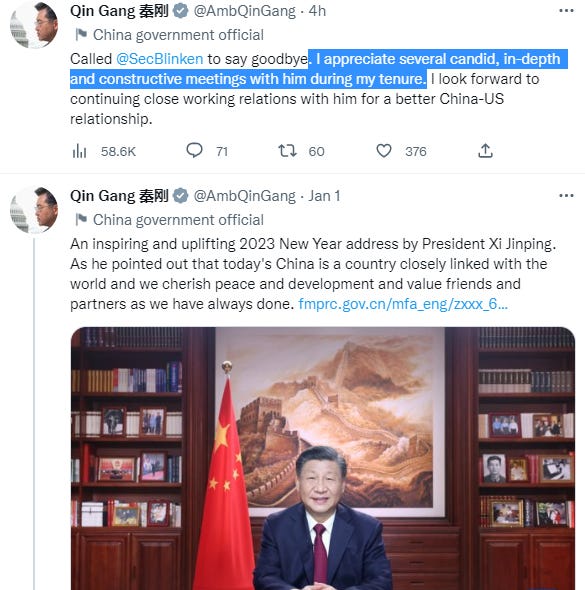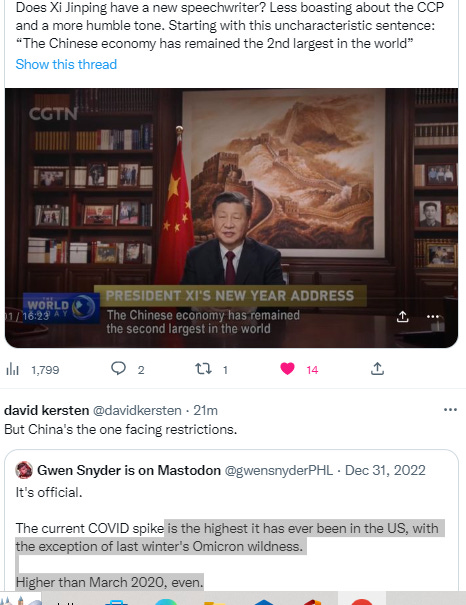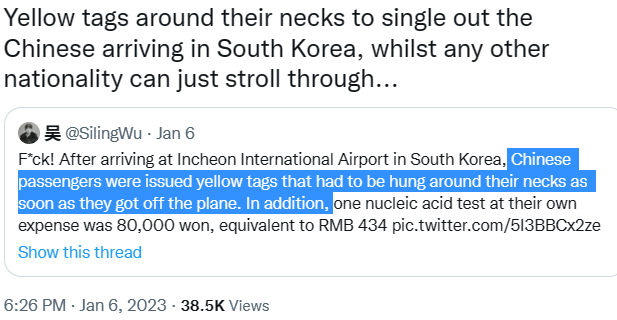The excursions of China's carrier battlegroup Liaoning, during the most recent exercise in the Western Pacific. The carrier battlegroup came within 618 km northwest of Guam (Distance Beijing to Guam: 4,030 - 4,050 km). On Dec. 25 the Liaoning was spotted 670 km (416 miles) southeast of Okinotorishima, before returning to the waters between Taiwan and Japan. By 2025, China can muster a fleet, capable of deterring US naval activities in the Western Pacific. By 2025, China will have 3 carriers in service: Carrier 16 Liaoning, Carrier 17 Shandong, and Carrier 18 Fujian. Another important milestone around 2025, will be the introduction of J-35 carrier-based stealth fighter.
Whatever the case, a strong fleet deterring US naval intervention, is the key to winning a conflict over Taiwan. In early 2000s, the US could've easily guaranteed the security of Taiwan even after it declared independence. Back then, the pro-independent former President of Taiwan Chen Shui-bian wanted it.
But the U.S. vehemently opposed Taiwan's moves towards independence in 2003. George Walker Bush, the POTUS in 2003, still too busy amid two fronts: in Afghanistan, and in Iraq. If the U.S. cared so much about Taiwan, they would've allowed them to declare independence already, and guaranteed their security.
The fact that the U.S. has not supported Taiwan declaring independence in the early 2000s, means Taiwan is nothing but a disposable pawn to the U.S., at least in George Walker Bush period. Back then, China's most advanced ships were 4 Soviet made Sovremenny class destroyers.
Arguably, U.S. admit failure to analysis in early 2000 about entire Pacific (maybe because too busy in the Middle East), then since 2022 try repair it, in parallel other situation David v Goliath like Taiwan v China (Ukraine v Russia).
(So far), seriously the U.S. aims to protect Taiwan, actually based on the newest situation in Palau. In Palau (*distance Guam to Palau: 1,280 - 1,300 km; distance Beijing to Palau: 4,015 - 4,025 km), Pentagon’s push to drastically beef up both its offensive and defensive capabilities in the Western Pacific gains steam. Called the Tactical Mobile Over-the-Horizon Radar, or TACMOR, the sensor station will be installed on the increasingly strategic island of Palau to enhance air and maritime domain situational awareness for U.S. and allied forces in the region.
The Department of Defense announced on Dec. 28 that it had awarded a $118.4 million contract to Gilbane Federal for the construction of reinforced concrete pads and foundations in support of the installation of TACMOR equipment on the island. The contracting activity for what’s being called the TACMOR infrastructure project is the Naval Facilities Engineering Systems Command Pacific, and work is expected to be completed by June 2026. The long-range radar could be critical for keeping an eye on Chinese activities and is another sign of growing U.S. vigilance in the Pacific.
These systems are not nearly as precise or resolving as many of their line-of-sight counterparts, and their static nature makes them vulnerable to attack. Atmospheric and space weather conditions also play a big role in their effectiveness from moment to moment. Still, they can offer wide-area situational awareness and critical sensor cueing and early warning, which would allow other higher-resolution sensors without such a long reach or large view to investigate a target further. With networking and data-fusion, this can happen seamlessly. They can also spot stealthy targets that are optimized to evade detection by fire control and traditional line-of-sight search radars operating on higher frequencies.
All of these characteristics can be extremely valuable when monitoring an area like, say the South China Sea (roughly 1,000 miles from Palau) or, when it comes to surface wave types, the low-altitude and surface approaches to the island.
While not traditionally capable of independently generating 'engagement quality' radar tracks, with high-speed computer processing and artificial intelligence-enabled software, an OTHR's lower-fidelity data can prove to be very revealing and actionable, much more so than in the past. China knows this very well, as it too is leveraging this technology to a large degree in the same theater of operations and especially in the South China Sea.
According to the Air Force’s budget justification documents for Fiscal Year 2023, TACMOR will be a quarter of the size of traditional OTHR and will be stationed in the Republic of Palau in the hopes of enhancing the situational awareness of activity in the air and on the ocean.
Since Nancy Patricia D’Alesandro Pelosi visited Taiwan, the U.S. really significantly muscle up military ability across the Pacific. Vice President Kamala Devi Harris’ recent two-day trip to the Philippines makes her the highest-ranking official from the Biden administration to visit the country. Harris got straight down to the business of letting the region know who has been the sheriff in these parts for the better part of the post-war period.
Harris met with President Ferdinand "Bongbong" Romualdez Marcos Jr. then flew to Palawan province, close to waters of the South China Sea currently contested by China and the Philippines. In front of the gathered navy and fisherfolk, she reaffirmed the unwavering support of the United States in the face of Beijing’s “intimidation” and “coercion” in the territorial row.
The White House touted the “ironclad” relationship between the two countries as exhibited by the 2014 Enhanced Defense Cooperation Agreement (EDCA), which allows American troops to operate in a number of Philippine military facilities. The Biden administration also announced a doubling of the shared bases, an injection of US$82 million for EDCA, and that more is on the way.
Harris’ brief visit had three effects. First, it was a direct statement to China by the Biden administration about maritime territories – arguably the most direct, alongside frequent US Navy operations within the South China Sea. Second, it allowed Harris to splash the cash to back up a range of US promises. And third, with Marcos new to the role, it reminded the Philippines of US dominance in shaping the region’s geopolitical narrative.
The Pacific Deterrence Initiative (PDI) crafted in April 2022, outlines steps for tougher US presence in the Indo-Pacific region in terms of its armed forces, digital influence and surveillance. The US Congress has granted this program US$7.1 billion for 2022-23.
ASEAN countries are important partners for the United States, with military agreements already in place for Vietnam and Singapore. But the Philippines is historically the most willing to accommodate the United States, serving as a quasi-auxiliary force in conflicts such as the Korean, Vietnam and Afghan wars.
Despite American influence in the region, most ASEAN partners are likely still reluctant to be dragged into any situation that forces them to side with either China or the United States. The Philippines appears differently minded. Marcos, for example, spoke of a “joint response” for Taiwan should tensions escalate.
The dilemma is always the danger – which side is escalating, which side is responding? The Philippines faces difficult decisions. Caught between provocations and pledges of military aid and soldiers, the Marcos government treads near a tripwire of potential conflicts.
Singapore’s prime minister-in-waiting Lawrence Wong Shyun Tsai warned that the U.S. and China may “sleepwalk into conflict” if they don’t engage with each other and de-escalate rising tensions over Taiwan.
In an interview with Bloomberg Editor-in-Chief John Micklethwait amid Singapore Independence Day in 2022 (August 8th 2022), Wong said the relationship between the world’s biggest economies was on a “very worrying” trajectory in the wake of the U.S. House Speaker Nancy Pelosi’s visit to Taiwan and China’s subsequent military drills around the island.
“We are starting to see a series of decisions being taken by both countries that will lead us into more and more dangerous territory,” Wong, now serving as deputy prime minister and finance minister. Lawrence Wong, an awkward, is the first high-profile person who met Pelosi in her Asia Trip amid Covid Peak in August 2022. Pelosi’s Trip Route was Singapore - Malaysia - Taiwan - South Korea - Japan then back to the DC again.
When asked how likely it is that China could invade Taiwan, Wong replied that it is "hard to say" especially as things are becoming more uncertain. The US has no official diplomatic relations with Taiwan but is bound by American law to provide it with the means to defend itself.
"Taiwan is certainly one flashpoint. It can easily become very dangerous, as we have seen in recent events, and can even escalate quite quickly, not because either party deliberately wants this to happen, because as I said, both sides understand the consequences and really do not want to go into conflict," Wong said.
Wong was asked if Pelosi's visit gave the reassurance that the US would back its allies, and if he felt that Singapore was an ally of America, Wong said: "We are not an ally to America."
"We conduct our own foreign policy based on our own vital and core interests in a principled manner," he said, adding that Singapore has always upheld the "one China" policy.
Wong said Singapore wants to create a framework in the Asia-Pacific, particularly in Southeast Asia, where all the major powers including the US and China have stakes in the region.
"We think that will contribute to a more stable configuration, an overlapping circle of friendships, where everyone has stakes here and hopefully that will increase interdependencies and help make this a more stable configuration," he said.
Micklethwait then cited how China's economic decoupling - switching focus from economic growth to economic control - has pushed businesses and people in Hong Kong to Singapore, and asked whether Singapore has benefited from this.
Wong responded that "we take no joy when places around us suffer negative consequences".
Actually, the race, the competition of high-tech military is not only about the military. But also space. The race to the moon between the United States and China is getting tighter and the next two years could determine who gains the upper hand. NASA Administrator Clarence William “Bill” Nelson II warns that Beijing could establish a foothold on the moon and try to dominate the most resource-rich locations on the lunar surface.
He cited an Earthly example in the South China Sea, where the Chinese military has established bases on contested islands. “If you doubt that, look at what they did with the Spratly Islands.”
Nelson’s hawkish comments follow NASA’s 26-day Artemis I mission, in which an uncrewed Orion space capsule flew around the moon. That mission, widely regarded as a success, was the first big step toward NASA’s plan to land astronauts on the lunar surface to begin building a more permanent human presence — which could come as early as 2025.
He is clearly worried about China also gaining ground — and eyeing some of the same locations for its moon landings.
“China within the last decade has had enormous success and advances,” he said. “It is also true that their date for landing on the moon keeps getting closer and closer” based on the country’s announcements.
It also comes on the heels of Congress’ passage of a full-year budget for NASA. The agency did not get all the funding it requested, but Nelson insisted that the “have to haves” were not shortchanged. That includes the key components for the next two moon missions, Artemis II and Artemis III.
But looming ever-larger is China’s aggressive space program, including its recent opening of a new space station. Beijing has announced a goal of landing taikonauts on the moon by the end of this decade. In December, China’s government laid out its vision for more ambitious endeavors such as building infrastructure in space and creating a space governance system.
Terry Wayne Virts, a former commander of the International Space Station and Space Shuttle and a retired Air Force colonel, said the competition has political and security components.
“There is potentially mischief China can do on the moon,” Virts said. “If they set up infrastructure there they could potentially deny communications, for example. Having them there doesn’t make things easier. There is real concern about Chinese meddling.”




